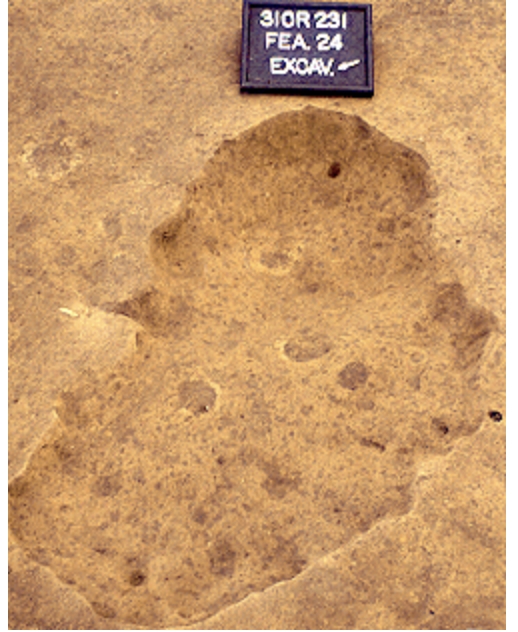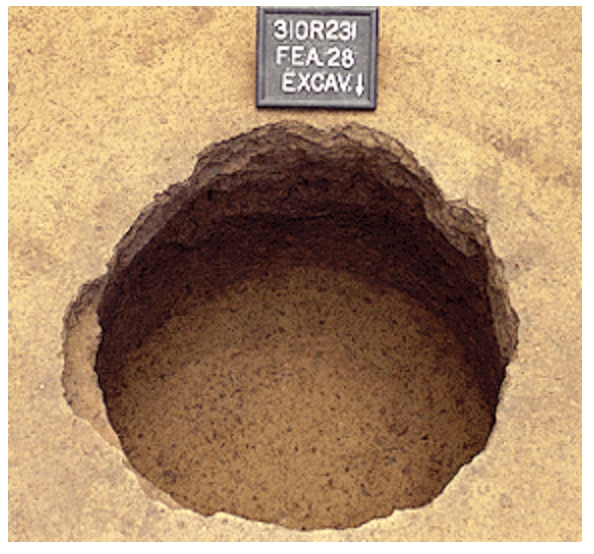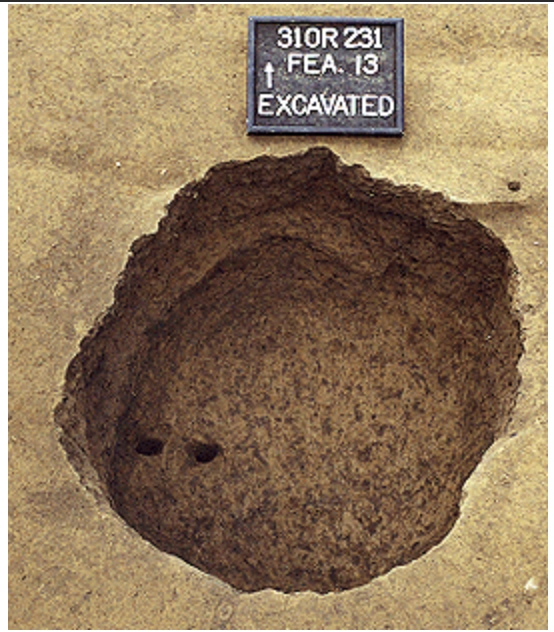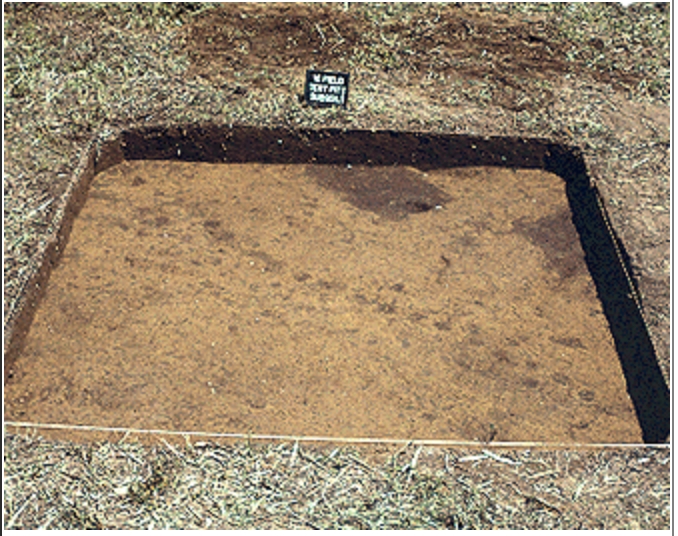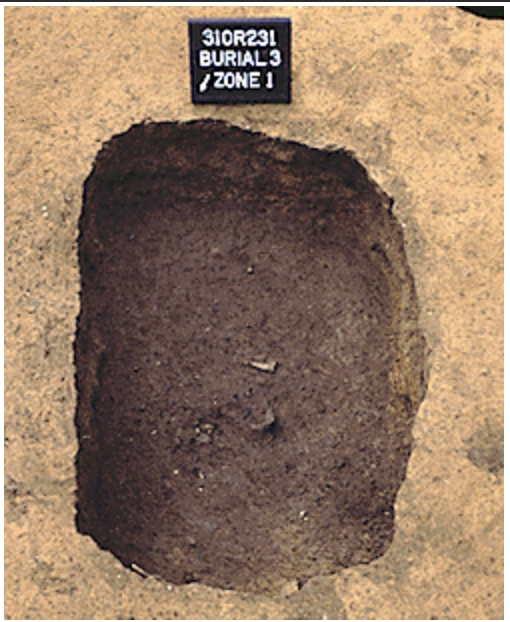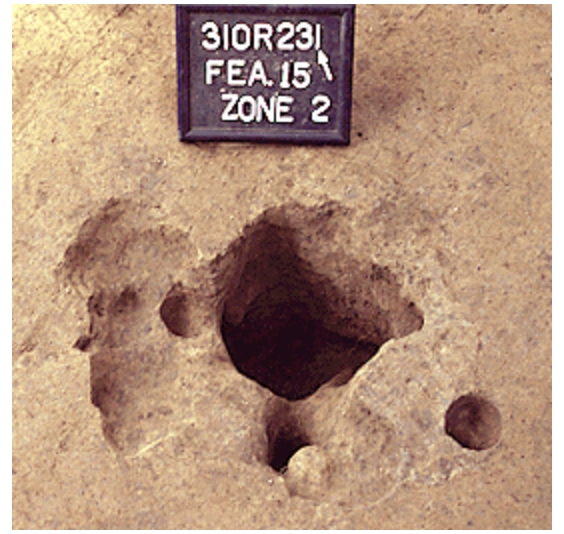Common Feature Types
Below are some of the common types of archaeological features found at Occaneechi Town.
Pits are roughly circular, moderately deep holes that were dug by the town's inhabitants. Most probably were used to hide or conceal belongings and were subsequently filled with domestic refuse.
Storage pits are large, deep, cylindrical holes that were dug near or inside houses for below-ground storage of food and other belongings. Once they were no longer needed, these pits were filled with soil and refuse.
Smudge pits are small, shallow pits filled with charred corncobs or other plant matter. Such pits are thought to have been used in smoking (or smudging) hides.
Shallow basins and depressions are shallow, often irregular-shaped holes that were filled with refuse or topsoil. Some of these may have been dug to get clay or soil for other purposes.
Burials are pits, usually oval or rectangular in shape and often quite deep, that were dug as individual graves. They contain the skeletal remains and accompanying funerary objects of persons who died at Occaneechi Town. The pit shown here is partially dug.
Postholes are small, usually circular stains of dark soil that represent places where wooden posts once stood. Alignments of such stains represent buildings and walls, such as houses and defensive palisades (shown here). Other postholes may represent sheds or places where drying racks or pole frames were erected.
Natural Disturbances: tree and animal disturbances are irregular, filled-in holes that likely represent tree stumps or rodent burrows. This feature is a stump hole.
Last updated
